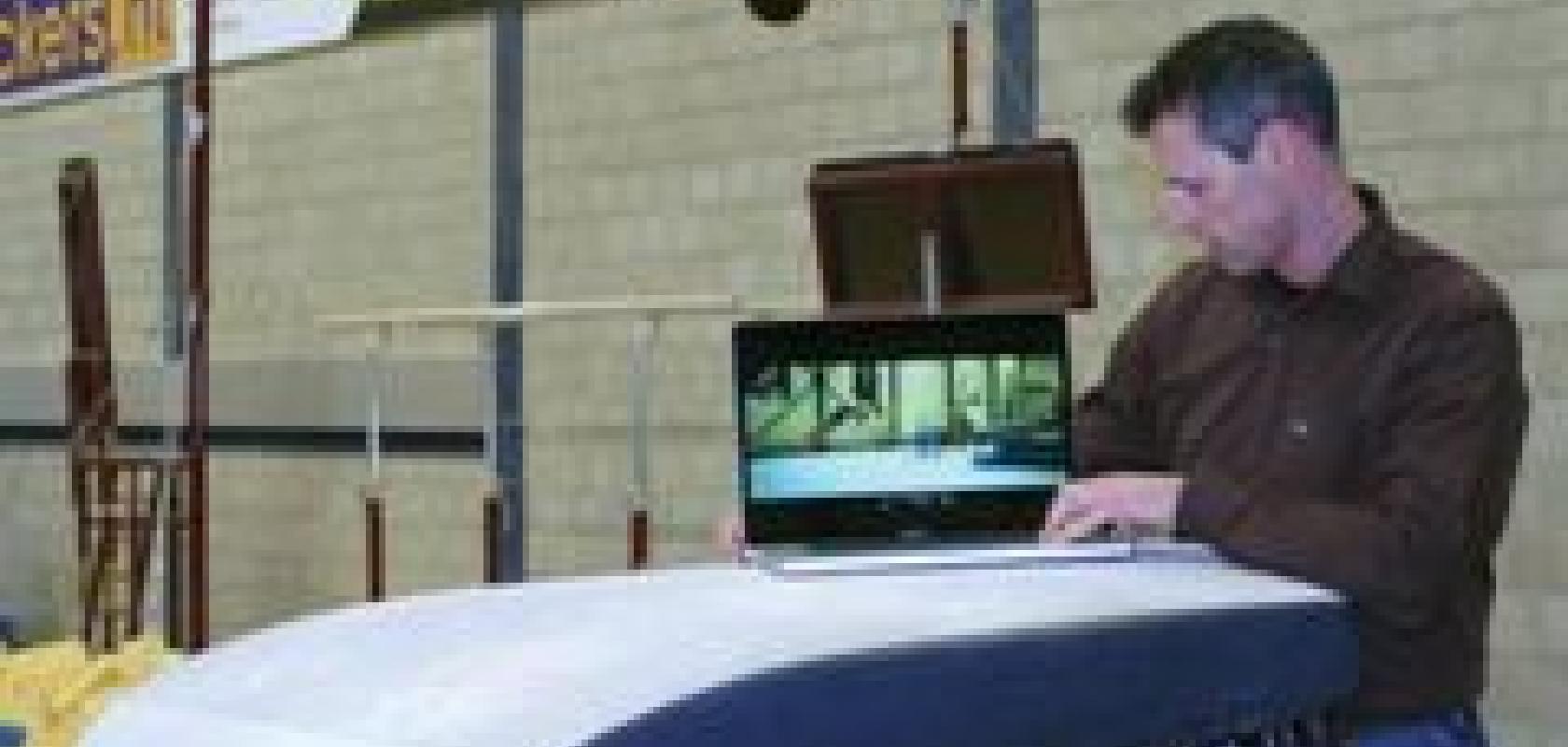The Ashes have begun in Australia. England, as I write, have secured a draw in the first Test with some superb batting from Alastair Cook and Jonathan Trott on the final day as England hit 517-1 before declaring. Roger Federer has won the ATP World Tour Finals at London’s O2 arena beating Rafael Nadal in three sets. Then there is English Premier League football, with Dimitar Berbatov scoring five goals for Manchester United against Blackburn in a 7-1 thrashing at the weekend. When Woody Allen’s character in Annie Hall is asked while watching the New York Knicks on TV: ‘What is so fascinating about sitting around watching a bunch of pituitary cases stuff a ball through a hoop?’, he replies, ‘What’s fascinating is that it’s physical.’ Sport evokes emotion and it can be fascinating to watch. It can also be heartbreaking: think of the ‘goal that never was’ when England’s footballers were so woefully outplayed by a far superior German side in the 2010 World Cup. Woeful – from an English perspective anyway.
That particular event – for those who didn’t see the game, Frank Lampard’s shot ricocheted off the crossbar and bounced over the goal-line, but was not given by the referee – reignited discussion among the British media of introducing goal-line technology in football, akin to the Hawk-Eye adjudication system currently used in tennis and, in a broadcast capacity, in cricket. Hawk-Eye is a ball-tracking system that uses several calibrated cameras to triangulate the position of the ball.
The Hawk-Eye system used in cricket, currently in action in Australia for The Ashes, features six high-speed calibrated cameras positioned around the ground. When a ball is bowled, the system automatically locates the ball within each frame of video from each camera in order to calculate the 3D position of the ball. In addition, by measuring the position of the ball at multiple frames after it has bounced, the speed, direction of travel, swing and dip can be calculated, which allows the future path of the ball to be predicted – useful for analysis of LBW decisions.
‘High-speed imaging is essential to deliver the accuracy required,’ comments Alastair Slater, business development manager at Stemmer Imaging, which supplied imaging equipment for the Hawk-Eye ball tracking system. ‘With the cameras used in the Hawk-Eye cricket system the ball travels just 20cm between frames,’ he says, adding that a requirement for high-speed imaging, often in excess of 100fps, is common to many sporting applications.
With respect to football and the possibility of introducing goal-line technology, there are two potential systems that could be used: the Hawk-Eye-style ball-tracking system and those that use a sensor in the ball, such as that from German company Cairos Technologies. ‘Where the Hawk-Eye system scores is that it is completely non-invasive, whereas you have to use a special ball with the alternative system,’ comments Slater.
Swimming coaching
Along with the high-profile ball-tracking systems, imaging is used in many sports for coaching and training purposes. InnoSportNL, the Dutch National Centre of Innovation in Sports, has established technical laboratories with imaging capabilities for various sporting disciplines, including swimming, gymnastics and ice skating, among others. InnoSportNL aims to have a Dutch team in the top 10 in the world in 10 different sporting disciplines.
At its swimming laboratory in Eindhoven, where half of the Dutch national team train (the other half train in Amsterdam), the imaging system is used by coaches to give direct feedback to the swimmers on their performance in the pool – which, according to Roald van der Vliet, innovation manager for swimming at InnoSportNL, is an important coaching technique.

Images of a swim start captured by Basler cameras at InnoSportNL’s swimming laboratory in Eindhoven. Around 15 parameters are analysed for the starts. Image courtesy of InnoSportNL
‘The imaging system is the basis for our research lab,’ van der Vliet comments. ‘The visual feedback is very important for the swimmers to change their movement behaviour, especially the direct feedback – it takes only around 20 seconds to capture the images and replay them to the swimmers in the lab. Memories of movements you’ve just carried out remain fresh in the mind for around 30 seconds, so if you do a start and then walk back to the lab and review the images then you can still remember the motions of that start and how you performed. You have knowledge of your performance and you can see the outcome and the coach can give direct feedback on the images replayed on the screen, which is an effective way of improving performance.’
The facility has a four-lane 50m swimming pool, with 11 underwater cameras built into the sides – one frontal camera, and four cameras above the water looking down. InnoSportNL worked with DVC Machinevision, a Dutch machine vision supplier, to implement the vision system, which used cameras from Basler Vision Technologies.
The underwater cameras capture the swimmers at 50fps, which, according to van der Vliet, is fast enough, as the movements in swimming are not as fast as for running or cycling, for instance. All the cameras are calibrated and synchronised with each other, which allows researchers to analyse the images. InnoSportNL has two PhDs conducting in-depth image analysis on the swimmers to improve performance.
‘We have developed a measurement tool with MatLab to analyse swimming starts, turns and strokes,’ explains van der Vliet. ‘We measure about 15 parameters for the starts, 20 parameters for the turns, and 6 for the strokes. We’ve also developed a database that includes all of the parameters, so we can compare swimmers with themselves and with other swimmers. We also carry out statistical analysis on the measurements to provide feedback to the coach on what can be improved.’
InnoSportNL has been running the system for around a year at the Eindhoven swimming lab. Erik In ‘t Groen, sales engineer at DVC Machinevision, comments: ‘One of the requirements [of the system] was for no frame loss in the recordings [so that accurate post-analysis measurements can be made] and therefore a sequence file format is used rather than JPEG compression. It’s full frame, full resolution in-sequence format, which makes it challenging just because of the amount of data produced – up to 70MB/s from one camera,’ he says, adding that with 16 cameras the data stream is very large.
According to In ‘t Groen, the swimming lab originally had VGA resolution. The problem with VGA resolution is that, in the water, details like the position of the hand or the leg are lost, which is why 2-Megapixel cameras from Basler were installed. The cable length and ease of integration were further reasons why Basler’s cameras were used.
‘These sort of sport installations require a certain frame rate, either 50fps or 100fps, high image quality, colour images, and for the swimming technical lab, they wanted to combine at least 10 to 15 cameras on one PC,’ explains In ‘t Groen. ‘The rest of the requirements came from our side; we tested the system with several resolutions and frame speeds and ended up with the Basler choice. They also wanted systems that could work continuously for at least five years.’
Van der Vliet states they are very happy with the system: ‘It always works correctly – in sport it is important that the system is reliable, because trainers are typically very demanding, especially top-level coaches.
‘These are world class athletes,’ he continues. ‘We have 4x100m freestyle gold medallist from the Beijing Olympics and four of our women are in the top 15 in the world.’ They include Marleen Veldhuis, Femke Heemskerk, Ranomi Kromowidjojo, Hinkelien Schreuder and Inge Dekker. ‘For daily use it is a perfect system. The cameras are industrial cameras that are robust and reliable,’ he concludes.
Biomechanical studies
The more advanced image analysis conducted by sport science researchers at the Eindhoven pool typically puts greater emphasis on capturing high-quality images. German company, Simi Reality Motion Systems, provides vision-based motion tracking systems used in various sporting disciplines, typically to study the biomechanics of the movements of top athletes. In the Beijing Olympic Games, for instance, around 15 Gold medal winners used the system in their training, including 2008 Olympic high jump champion, Belgian Tia Hellebaut.

Simi motion tracking system used to analyse a tennis stroke. Image courtesy of Simi Reality Motion Systems
‘Typically for sport science research, several cameras (around four to six) are calibrated and synchronised to record images to a PC,’ explains Philipp Russ at Simi Reality Motion Systems. The athletes wear small markers, from which the Simi software calculates a 3D model of the athlete’s motion. The model is then used to study the biomechanics of the movement – values like limb angles, rotations of joints, or accelerations, along with the forces acting on joints. For instance, Russ explains that for the high jump, the system can be used to calculate the forces acting on the knee during run-up and take-off and if the motion is performed differently, what effect this has on those forces. He adds that studying the biomechanics of a motion can not only improve performance, but also provide information on optimising the movement to prevent injuries.
The Simi systems use cameras from Allied Vision Technologies (AVT) and have been used in the training of top athletes along with amateur sports clubs conducting less sophisticated studies. The system is installed at the Vanden Berge Performance Center in Munich for golf swing analysis and uses six AVT Pike cameras with 200fps. 3D data is calculated, which is then used to optimise the swing.
‘For sports applications, high-speed cameras are required to capture what can be very fast motions,’ comments Russ, adding that most systems installed for sports analysis use between 100 and 200fps frame rates – standard speeds of 25 to 50fps are not high enough for these applications. ‘In this high-speed area, AVT provides very good cameras with a good price/performance ratio,’ he continues. ‘The interface to the PC also has to be such that footage from several synchronised cameras can be recorded. It would be no use, for example, if we used cameras that had an internal memory, because the process of acquiring video stream from 10 cameras would take too long. We need cameras that have the potential to output the images directly to the PC hard disk.’
While top athletes will make use of sophisticated imaging technology to fine-tune their technique and hone their performance, the rest of us watching will simply enjoy the performance. And if England retain The Ashes, all the more so.
-
Hawk-Eye Innovations: www.hawkeyeinnovations.co.uk
-
Stemmer Imaging: www.stemmer-imaging.co.uk
-
Cairos Technologies: www.cairos.com
-
InnoSportNL: www.swimcentre.nl
-
DVC Machinevision: www.machinevision.nl
-
Basler Vision Technologies: www.baslerweb.com
-
Simi Reality Motion Systems: www.simi.com
-
Allied Vision Technologies: www.alliedvisiontec.com


